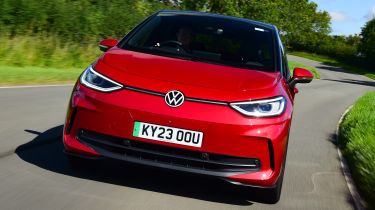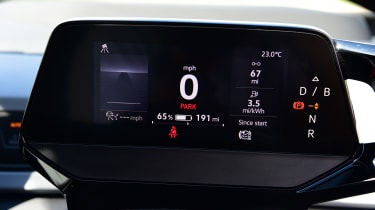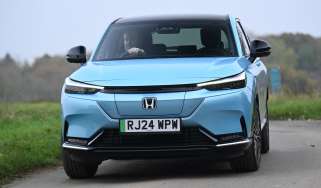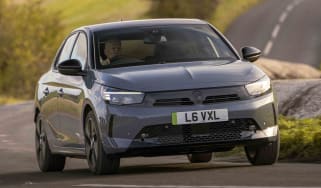Volkswagen ID.3 - Range, charging and running costs
The ID.3 should be cheap to run day to day and range is competitive for an electric hatchback

For a brief time, the ID.3 was available with three battery sizes, including a relatively small 45kWh unit that offered just over 200 miles of range. Now though, following the electric hatchback’s recent facelift, there are just two battery sizes available, with rapid-charging capabilities also varying depending on the model you go for.
The entry-level ID.3 Pro uses a 58kWh battery, which Volkswagen says is good for a range of up to 265 miles on a single charge. When we tested this particular version of the ID.3 in the UK it indicated well over 200 miles of range when we set off (with the battery at 92 per cent capacity), and we averaged over 3.3 miles per kWh efficiency during our testing. That’s not too bad, especially because we weren't hypermile it. We reckon you could see closer to 4mi/kWh in normal driving, as we saw when we drove the larger battery version in the UK.
Pro S models are fitted with a 77kWh battery that boosts the range up to 347 miles. During our twin test between the facelifted ID.3 and an MG4, which included driving across a variety of roads, we managed to achieve 3.8mi/kWh from the ID.3 Pro S. That equates to a real-world range of 293 miles.
The optional heat pump should also help improve the ID.3’s range come winter, because it warms the cabin more efficiently using heat that would otherwise be wasted, reducing the need to use power from the car’s main battery to run the heating in the climate control system.
Used - available now
For context, the Renault Megane E-Tech has a 280-mile maximum range from its 60kWh useable battery, and the MG4 Long Range will cover up to 281 miles between charges using its 61.7kWh useable battery – a few miles further than the ID.3 Pro can manage. However, the MG4 Extended Range can only do 323 miles before its battery runs flat, and the base Tesla Model 3 has a range of 305 miles, so the ID.3 Pro S does trump those rivals on paper.
The ID.3’s maximum charging speed depends on which model you go for. Pro-spec cars can charge at up to 120kW, while Pro S models will hit 170kW if you use a suitably fast charging point. A 10-80 per cent top-up for both versions should take about half an hour.
When it comes to topping up at home, a typical 7.4kW home wallbox will fully replenish the ID.3 Pro’s 58kWh battery in just over nine hours, or roughly 12 hours for the 77kWh ID.3 Pro S.
Electric cars like the ID.3 would be worthwhile for company car drivers compared with traditional petrol, diesel, or even hybrid-powered cars thanks to lower Benefit-in-Kind (BiK) tax rates. EVs also benefit from not having to pay road tax or the London congestion charge, at least until 2025.
Insurance groups
Insurance ratings for the ID.3 are higher than your average hatchback, but still competitive for a family-friendly EV. The ID.3 Pro Essential sits in insurance group 24 (out of 50), while the pricier ID.3 Pro S Match lands in group 26, so it shouldn’t be more expensive to insure than a Renault Megane E-Tech (groups 26-27) or Kia Niro EV (groups 28-29).
Check if your car needs an MoT and view its complete history with our MoT History Checker...
Depreciation
According to our latest expert data, the facelifted ID.3 is expected to hold onto between 45 and 51 per cent of its value after three years and 36,000 miles of ownership, with the smaller-battery ID.3 Pro Match projected to retain the most value.
The ID.3’s sister car, the Cupra Born, is expected to hold onto around 48 per cent of its list price after the same ownership period, while the Renault Megane E-Tech should retain about 50 per cent. It can’t quite match the Kia Niro EV, which will likely retain 53 per cent of its value over the same period.
To get an accurate valuation on a specific model check out our valuation tool...















